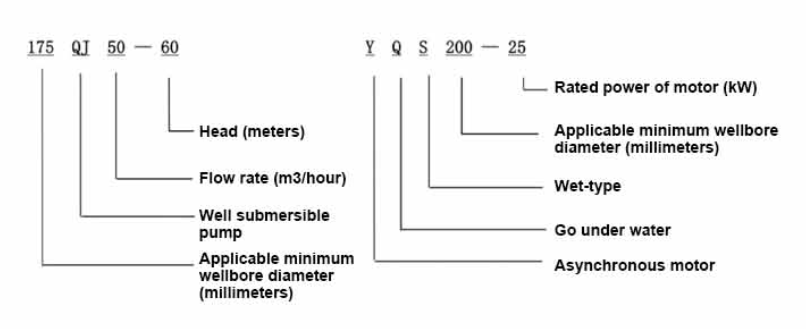Nov . 16, 2024 19:33 Back to list
submersible vs pedestal sump pump
Submersible vs. Pedestal Sump Pumps Which Is Right for You?
When it comes to protecting your home from water damage, a reliable sump pump is an essential tool, especially in areas prone to flooding or heavy rainfall. Sump pumps are typically categorized into two main types submersible and pedestal. Each has its own strengths and weaknesses, making them suitable for different applications. In this article, we’ll explore the characteristics of both options, helping you determine which is best for your specific needs.
Understanding Sump Pumps
Before diving into the differences, let's briefly discuss what a sump pump does. Sump pumps are designed to remove excess water that accumulates in a sump basin, usually located in a basement or crawl space. They work by automatically activating when water levels reach a certain height, preventing flooding and protecting your home’s foundation.
Submersible Sump Pumps
As the name suggests, submersible sump pumps are designed to be submerged underwater within the sump basin. They consist of a sealed motor and a pump that can handle both water and debris, making them efficient for various conditions.
Pros of Submersible Sump Pumps
1. Space Saving Since they sit below the water level, submersible pumps can save space and are less obtrusive than pedestal models. 2. Noise Reduction Submersible pumps are typically quieter during operation because they are submerged and insulated by the water around them.
3. Effective Debris Handling They are designed to handle solids and debris more effectively, making them suitable for areas prone to silt and sediment.
Cons of Submersible Sump Pumps
1. Maintenance Difficulty Because they are underwater, maintenance and repair can be tricky, often requiring complete removal from the sump basin.
3. Limited Lifespan The motor and components can be exposed to water damage if they fail, leading to a shorter lifespan compared to pedestal models.
submersible vs pedestal sump pump

Pedestal Sump Pumps
Pedestal sump pumps have a different design. The motor is mounted above the sump basin, keeping it out of the water, while a long shaft connects it to the pump that sits submerged.
Pros of Pedestal Sump Pumps
1. Easy Maintenance With the motor above the water line, these pumps are easier to access for repairs and maintenance, allowing for quick troubleshooting.
2. Longer Lifespan Since the motor isn’t exposed to water, pedestal pumps generally last longer than submersible ones, making them a more durable option in some circumstances.
3. Lower Initial Cost Pedestal pumps are usually less expensive upfront compared to their submersible counterparts.
Cons of Pedestal Sump Pumps
1. Noise The motor’s location means these pumps can be louder, which can be a nuisance, especially in residential living spaces.
2. Space Requirement Pedestal pumps take up more vertical space, which may be a disadvantage in smaller sump basins or crawl spaces.
3. Less Effective with Debris They are not as efficient at handling solids and may require frequent cleaning if water quality is poor.
Conclusion Which One Should You Choose?
Choosing between a submersible and a pedestal sump pump largely depends on your specific needs and the conditions of your home. If you have a smaller space and want a quieter operation, a submersible pump might be the better option. On the other hand, if you prioritize easy access for maintenance and are dealing with clean water or minimal debris, a pedestal pump could be the way to go.
Ultimately, consider factors such as the expected water level, debris presence, maintenance willingness, and budget. Both types of sump pumps play a critical role in safeguarding your home from water damage, ensuring that you make an informed choice is essential for long-term protection.
-
Submersible Water Pump: The Efficient 'Power Pioneer' of the Underwater World
NewsJul.01,2025
-
Submersible Pond Pump: The Hidden Guardian of Water Landscape Ecology
NewsJul.01,2025
-
Stainless Well Pump: A Reliable and Durable Pumping Main Force
NewsJul.01,2025
-
Stainless Steel Submersible Pump: An Efficient and Versatile Tool for Underwater Operations
NewsJul.01,2025
-
Deep Well Submersible Pump: An Efficient 'Sucker' of Groundwater Sources
NewsJul.01,2025
-
Deep Water Well Pump: An Efficient 'Sucker' of Groundwater Sources
NewsJul.01,2025
-
 Submersible Water Pump: The Efficient 'Power Pioneer' of the Underwater WorldIn the field of hydraulic equipment, the Submersible Water Pump has become the core equipment for underwater operations and water resource transportation due to its unique design and excellent performance.Detail
Submersible Water Pump: The Efficient 'Power Pioneer' of the Underwater WorldIn the field of hydraulic equipment, the Submersible Water Pump has become the core equipment for underwater operations and water resource transportation due to its unique design and excellent performance.Detail -
 Submersible Pond Pump: The Hidden Guardian of Water Landscape EcologyIn courtyard landscapes, ecological ponds, and even small-scale water conservancy projects, there is a silent yet indispensable equipment - the Submersible Pond Pump.Detail
Submersible Pond Pump: The Hidden Guardian of Water Landscape EcologyIn courtyard landscapes, ecological ponds, and even small-scale water conservancy projects, there is a silent yet indispensable equipment - the Submersible Pond Pump.Detail -
 Stainless Well Pump: A Reliable and Durable Pumping Main ForceIn the field of water resource transportation, Stainless Well Pump has become the core equipment for various pumping scenarios with its excellent performance and reliable quality.Detail
Stainless Well Pump: A Reliable and Durable Pumping Main ForceIn the field of water resource transportation, Stainless Well Pump has become the core equipment for various pumping scenarios with its excellent performance and reliable quality.Detail
